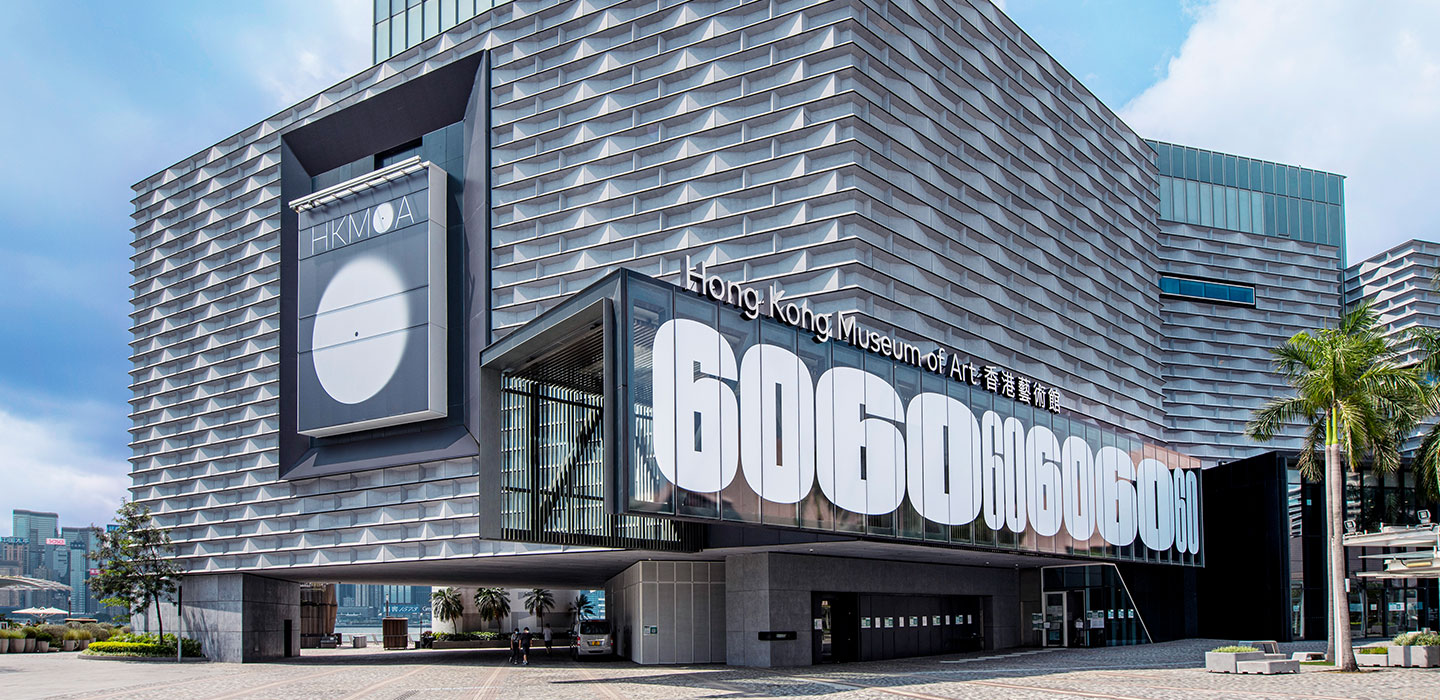香港是全球金融中心和文化之都。1962年,香港藝術館在舉世聞名的維港一側落成,今天則坐落在維港的另一側。
她的一生都在見證城市的一切並參與塑造這個城市。我是周柳建成,The China Current的主持人。
在香港藝術館創建60年後,我採訪了藝術館總館長、藝術遺產的守護者莫家詠博士。
1962年發生了很多大事,比如說古巴導彈危機、瑪麗蓮-夢露去世,還有納爾遜-曼德拉在南非被捕。這一年香港藝術館在香港大會堂落成,直到今天成長為現在的規模。建造她的最初願景是什麼?
我記得我讀過一篇我們第一任總館長約翰·溫納的文章。他在20世紀50年代末到達香港,他對香港的觀察之一是,這個城市沒有甚麼文化。對於沒有適合的場所展出藝術品這件事,他感到非常的震驚。因為當時所有的展覽場地都是臨時展示區。
到了1962年3月香港大會堂的建成和開放,確實是這個城市第一次為更文明的生活方式提供了基本的設施。因為大會堂裏有圖書館、劇院、音樂廳和博物館。
您擔任的是文化傳承守護者的角色,這是瞭解由古至今文明的一個窗口。對於您的前輩和您自己來說,這個責任有多大?
真正重要的是講述香港文化傳承的故事。我們藉由藝術代表香港。有時候,當講述古老的文化時,確實必須找到另一種方式,一種非常非傳統的方法來講述它,以解除人們的疑慮。因為當人們對傳統文化不太瞭解時,他們會感到害怕。
因此,我們真正的任務是以當代的方式來策劃藏品,這樣人們就不會被那些在某種程度上可能是陌生的知識所嚇倒。並為他們提供對藝術的另一種理解,將藝術與日常生活聯繫起來。
香港藝術館的藏品數量已經超過18000件,博物館將自己的收藏定義為「跨越了幾代人」的收藏,也是一個從「平凡」到「非凡」的收藏。
人們很容易想到的首先肯定是那些所謂的「非凡」作品。但是,我們同樣應該注意的「平凡」作品有哪些呢?
事實上,我們多年來一直在談論明星作品,明星收藏,有時甚至是明星策展人。為了慶祝我們的60周年紀念日,我們想要慶祝那些鮮為人知的作品。
我說的「鮮為人知」是指......有很多博物館都收集了許多非同尋常的藝術作品。但像我們這樣存在時間較長的博物館,我們也收集了許多藝術歷程中的關鍵時刻,這些關鍵時刻被封裝在藝術作品中。它可能是一個藝術家職業生涯的轉折點,它可能是我們歷史研究的一個突破,它可能是一個技法革新的關鍵點。
為了慶祝60周年,我們不是只提供一件一般的作品,而是提供一個平凡的或者鮮為人知的篇章。它現時在我們的展覽中展出,名為「行行重行行」。在那裡你會發現一個非常小但精心挑選的收藏清單,它是香港藝術轉折點的象徵,展出了我們所收集的轉折點。
您和博物館扶持香港,令她從一個金融中心、貿易中心轉變為一個繁榮的文化空間。現在與香港藝術館並肩站在一起的還有香港故宮博物館、香港M+博物館。您認為文化和藝術是否有可能在未來成為這個城市的基因?
我覺得在這個城市的基因中,文化和藝術已經是很重要的部分。更重要的是我們如何通過藝術和文化來告訴世界我們是誰。所以,並不是說需要用特定的藝術來定義城市,而是我們能否用藝術來給世界描繪出一個我們自己的肖像?
Hong Kong is a global financial center and a cultural capital. In 1962, the Hong Kong Museum of Art was founded on one side of its world-famous harbor and today sits on the other side, with a lifetime role as a witness and participant in the major events that have shaped this city. I’m James Chau, Host of The China Current. Sixty years after its creation, I speak with Dr. Maria Mok, Museum Director, and guardian of an artistic legacy.
1962 was the year of the Cuban Missile Crisis, the death of Marilyn Monroe, and also the arrest in South Africa of Nelson Mandela. But it was also the start of the City Hall Art Gallery and Museum, which became what it is today, the Hong Kong Museum of Art. What was the vision of its original, cultural architects?
I remember reading an article by John Warner, our first chief curator of the Hong Kong Museum of Art. He arrived in Hong Kong in the late 1950s and one of the observations he had was that there is nothing cultural in this city. There was no proper venue for art exhibitions, and he was really shocked at the time. All the venues for exhibitions were temporary display areas and I think by the time when the City Hall was built and opened in March 1962, it was really the first time the city had offered basic amenities to a more civilized way of living, because the City Hall housed a library, theater, concert hall and a Museum.
Holding this role as a keeper of legacy, that are a window onto the oldest living civilization today. How huge is that responsibility, not only for your predecessors, but also for you?
What's really important is to tell the story of the Hong Kong legacy. We represent Hong Kong in art. And sometimes with ancient culture, you do have to find an alternative way, a very unconventional approach, to tell that story to disarm people because when they don't know so much about traditional stories, they feel intimidated.
So, our mission is really to curate the collection with a contemporary touch, so that people are not intimidated by knowledge that could be otherwise alien to them in a way, and to offer them alternative understanding to art, and to connect art with everyday life.
Your collection numbers over 18,000 now and the Museum describes it as one that spans generations, but one that also travels from the "ordinary" to the "extraordinary". It may be easy to think first are the so called extraordinary pieces that stand up. But what are some of the "ordinary" works that we should equally be aware of?
Indeed, we've been talking about star pieces, star collections, star curators sometimes, for years. And to celebrate our 60th anniversary, we want to celebrate the uncelebrated.
And by "uncelebrated" I'm talking about... there are a lot of museums that collect extraordinary art pieces. But museums like us who have been around for a longer time, we also collect key moments, and these key moments are encapsulated in artworks. It could be a turning point in the career of an artist, it could be a breakthrough in our historical research, it could be a pivotal moment and a technical development in art.
For the 60th anniversary, I'm not offering just one ordinary piece, but I'm offering an ordinary or uncelebrated chapter, and it's now on display in our exhibition called "In-Between", where you will find a very small but carefully selected list of collections that are symbols of our turning point, the turning points that we collected.
You have gone from helping Hong Kong transform from a financial center, a trading center, to a thriving cultural space, where this Museum sits alongside the Hong Kong Palace Museum, and also M+ as well. Do you think that there is a likelihood that culture and the arts will become the DNA of this city in times to come?
I think the DNA of the city always has an important part in its art and culture. But what is more important is how we tell the world who we are through art and culture. So, it's not that there is certain art that defines us. But can we use art to portray, to give the world a portraiture of who we are?

